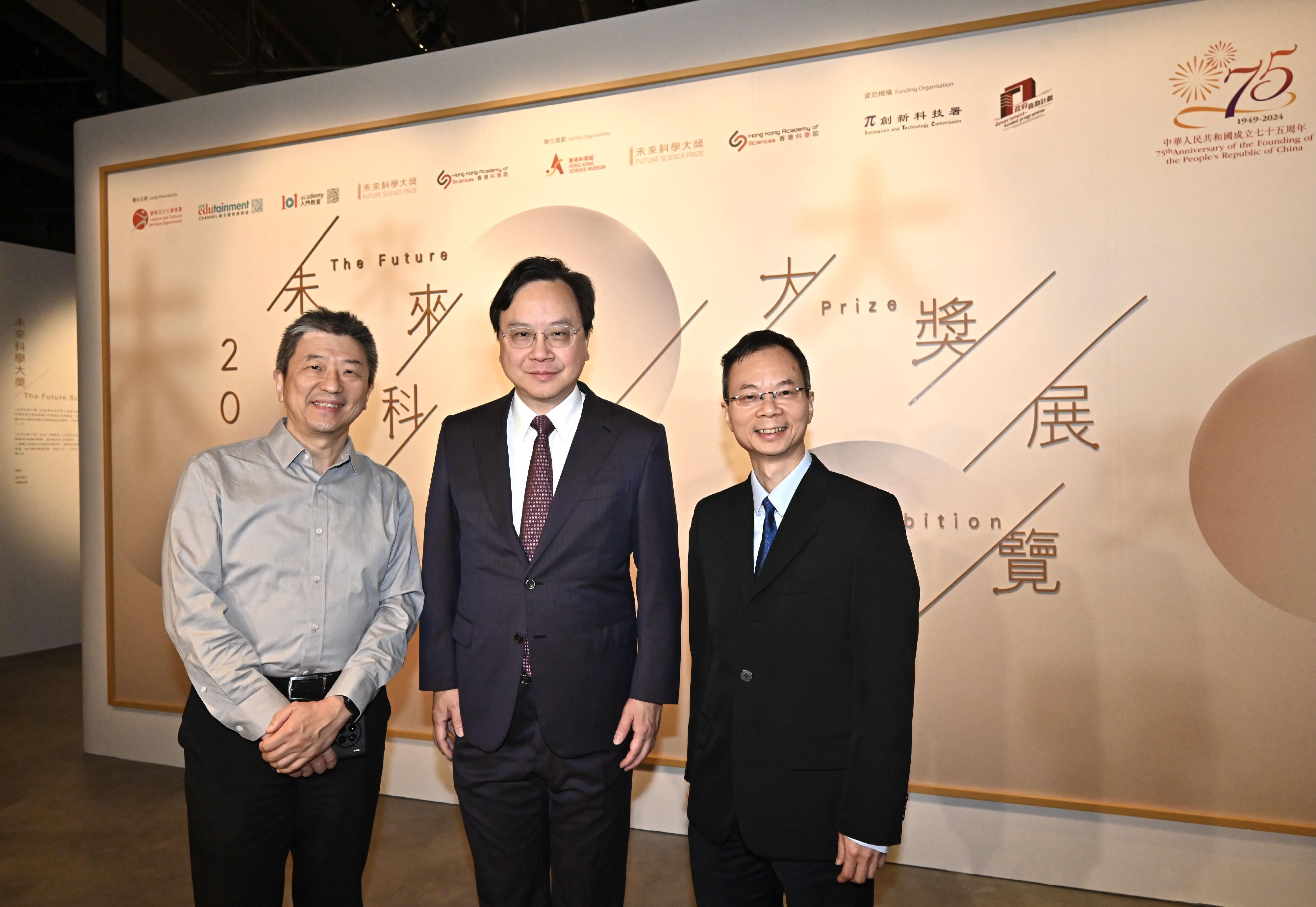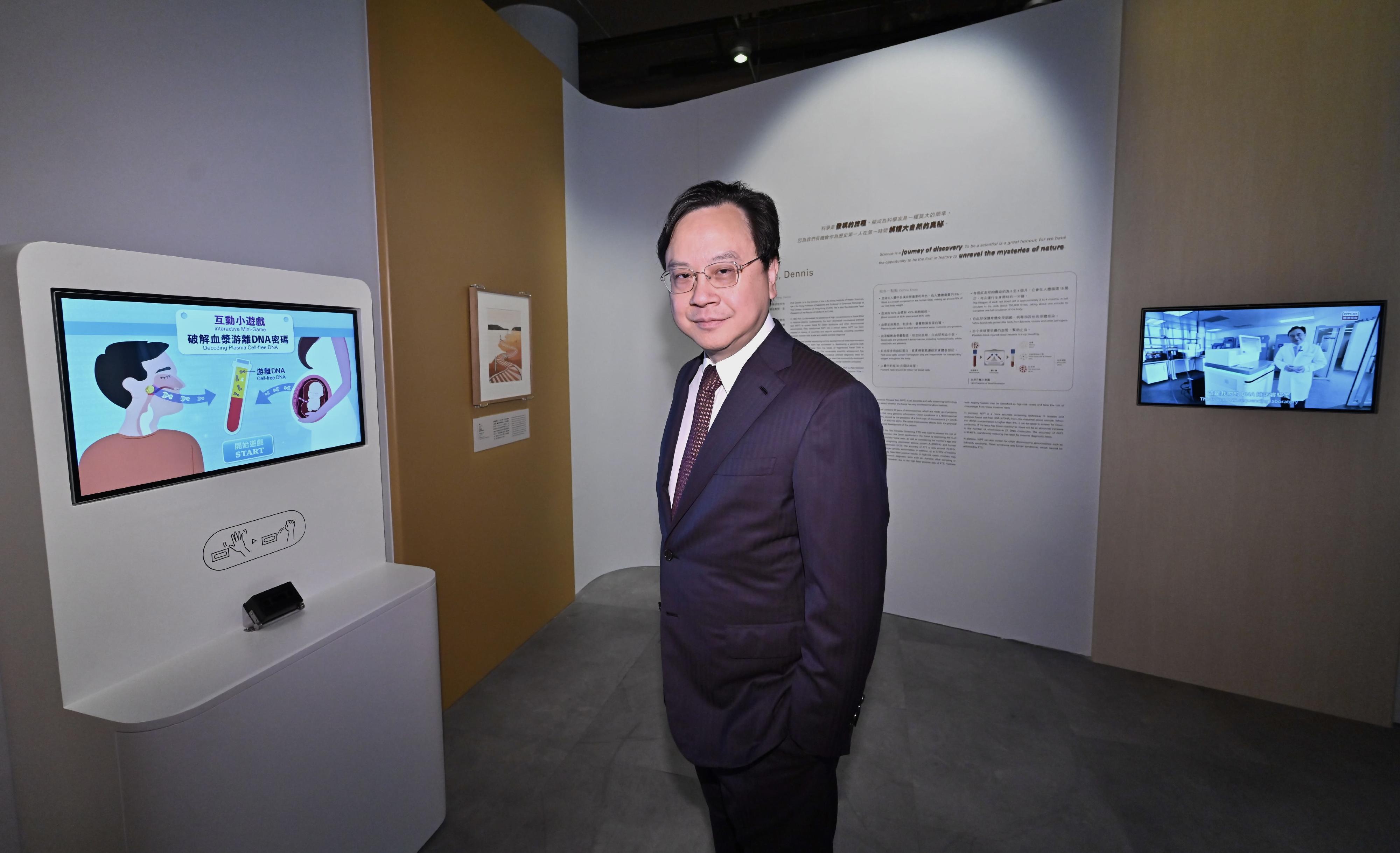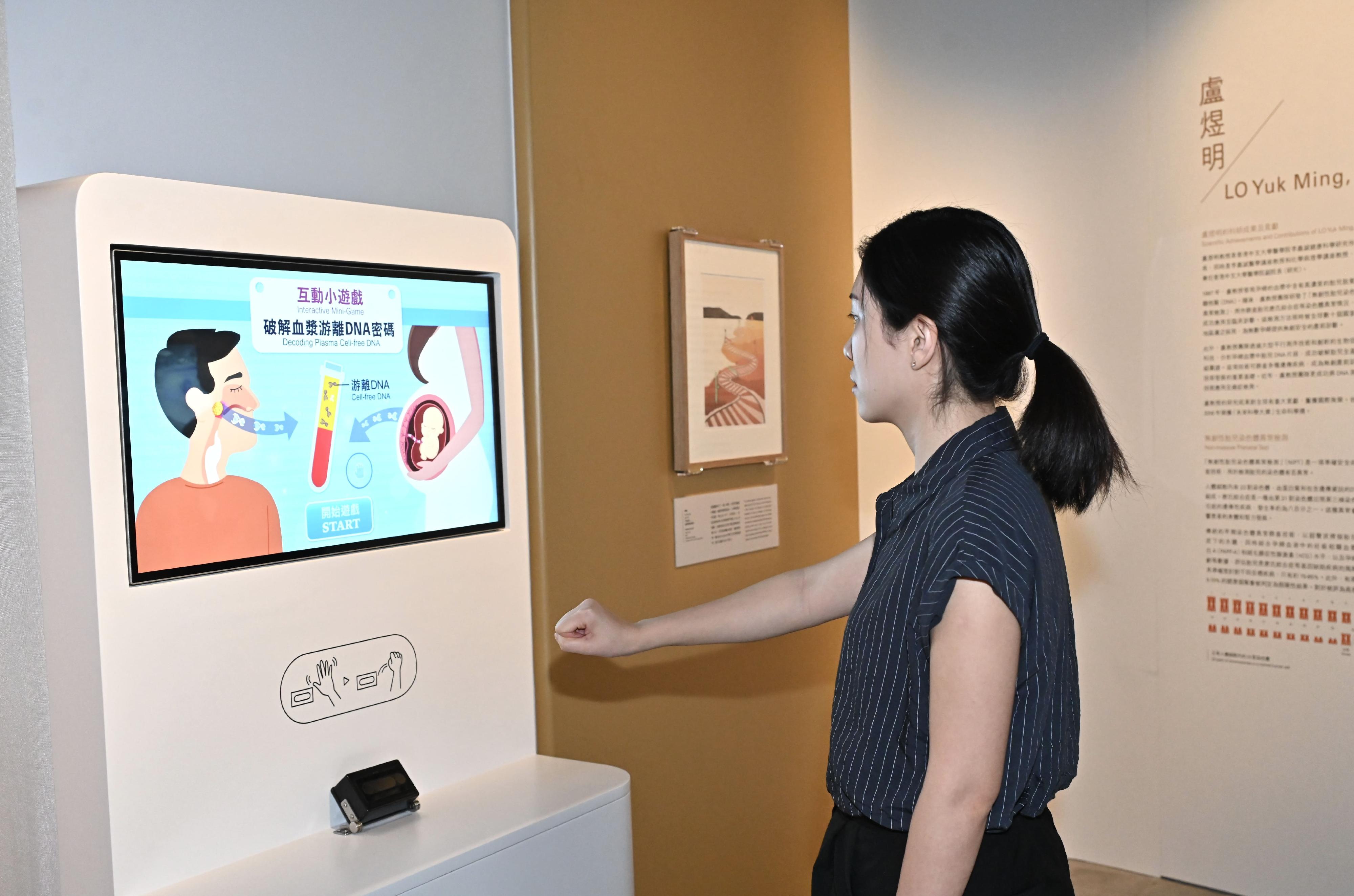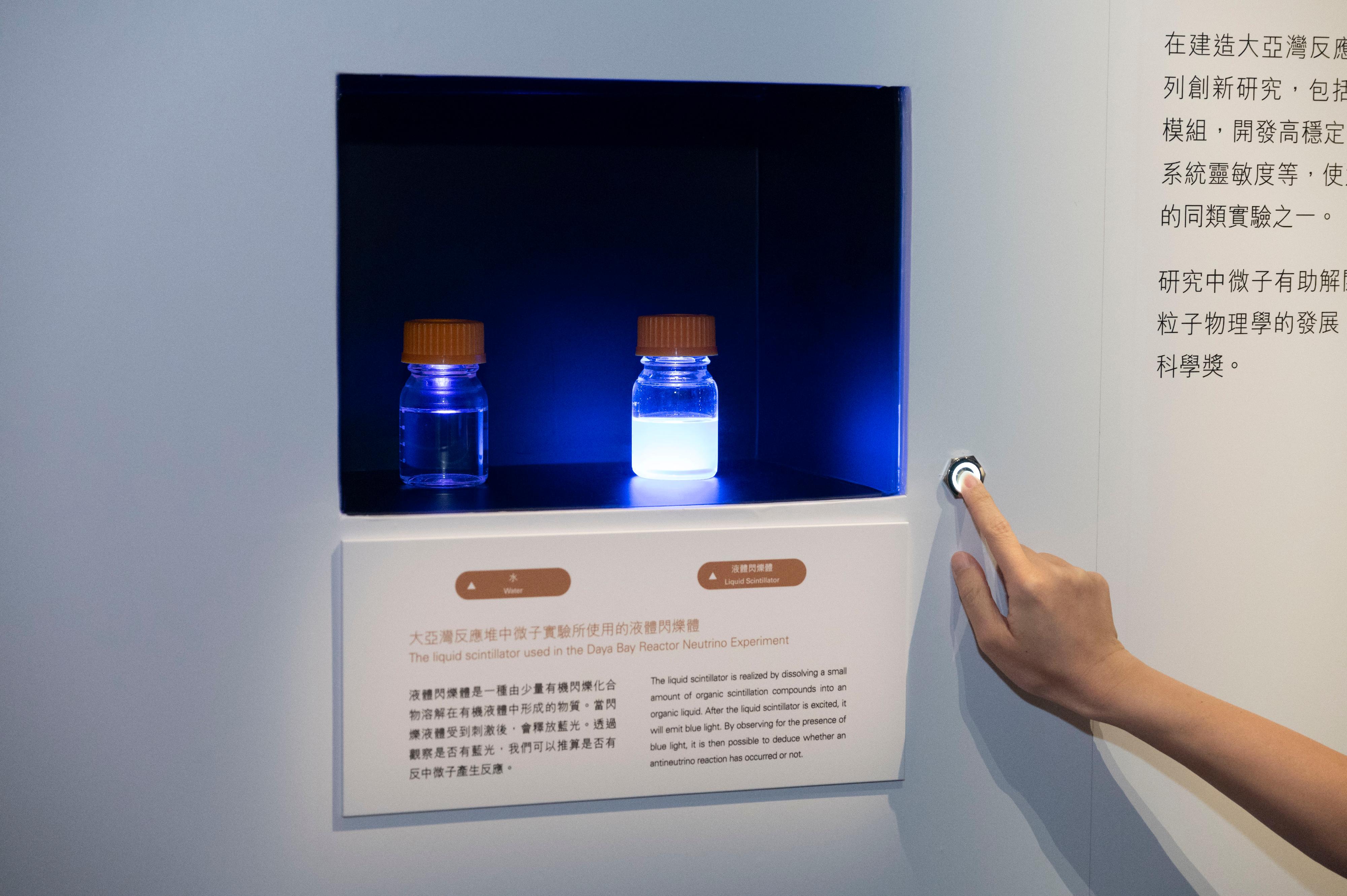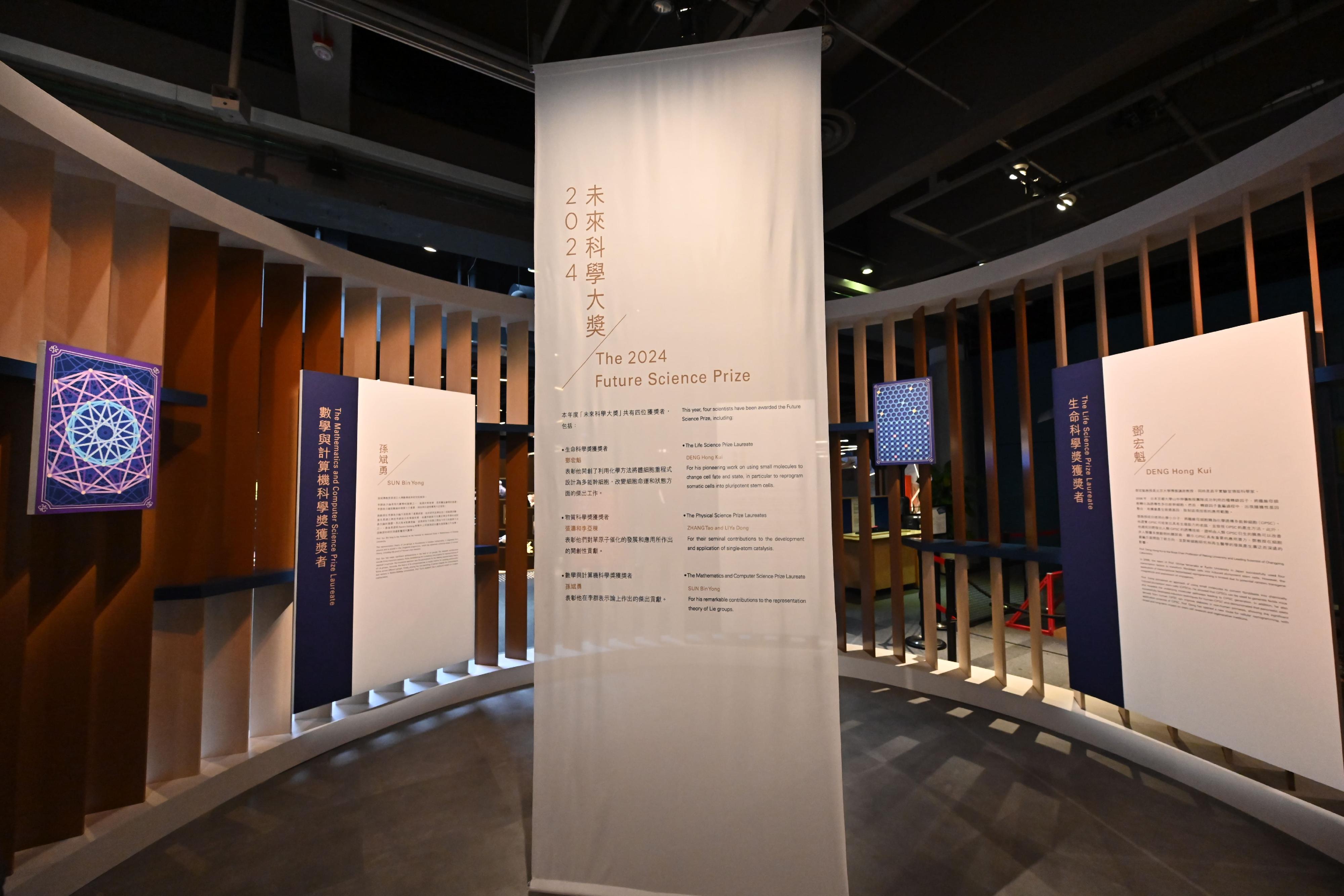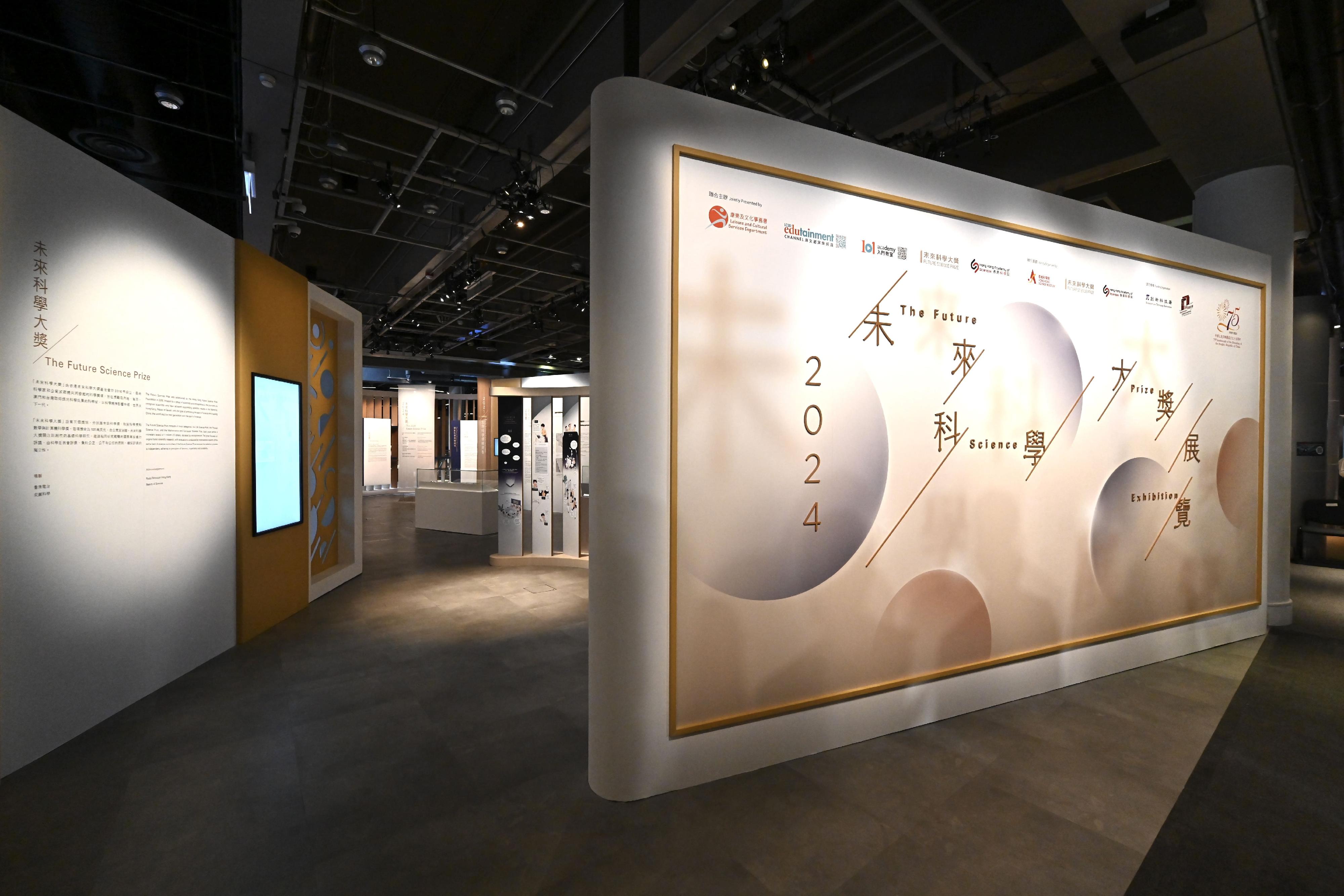Hong Kong Science Museum’s “2024 The Future Science Prize Exhibition” introduces contributions of laureates (with photos)
The Hong Kong Science Museum (HKScM) is staging "2024 The Future Science Prize Exhibition" from today (October 4) to November 4 at the G/F Exhibition Hall, introducing the Future Science Prize, the Hong Kong scientists who had won the Prize over the years and the laureates of this year. It also showcases exhibits related to their research, allowing visitors to know more about their research journey and achievements while learning about the scientific concepts involved.
The Future Science Prize, also regarded as China's "Nobel Prize", was established by the Future Science Awards Foundation in 2016. Initiated by a group of scientists and entrepreneurs, the prize aims to give recognition to scientists who have achieved outstanding scientific results on the Mainland and in Hong Kong, Macau or Taiwan, with the goal of inspiring China, the world and the next generation with the spirit of science. Three awards are presented, including the Life Science Prize, the Physical Science Prize, and the Mathematics and Computer Science Prize. Through panels, comics, videos and an interactive programme, the first zone of the exhibition shows the background, awards, selection process and laureates of the Future Science Prize over the past years.
The second zone introduces five Hong Kong scientists who had been awarded the Future Science Prize in the past years, including 2016 the Life Science Prize Laureate Dennis Lo Yuk-ming, 2019 the Physical Science Prize Laureate Luk Kam-biu, 2021 the Life Science Prize Laureates Yuen Kwok-yung and Joseph Sriyal Malik Peiris, and 2022 the Mathematics and Computer Science Prize Laureate Mok Ngai-ming. Interactive exhibits related to their research are on display. Among them, visitors can take on the role of a doctor in the touchless interactive game "Decoding Plasma Cell-free DNA" to tell the foetal gender or potential chromosomal abnormalities in the fetus by arranging the DNA acquired from the plasma of pregnant women, so that they can know more about the principles behind the Non-invasive Prenatal Test developed by Professor Dennis Lo. The concept of the other interactive exhibit "Catch an Antineutrino" originates from highly stable liquid scintillators created by Professor Luk Kam-biu and collaborators for detecting antineutrinos. Through this interactive exhibit, visitors can simulate the emission of blue light by the liquid scintillator as it is excited by antineutrinos.
The third zone introduces the four scientists who were awarded the Future Science Prize this year, including the Life Science Prize Laureate Deng Hongkui, the Physical Science Prize Laureates Zhang Tao and Li Yadong, and the Mathematics and Computer Science Prize Laureate Sun Binyong, as well as their research achievements and contributions.
The one-month exhibition will take place alongside the 2024 Future Science Prize Week, which will be held from October 30 to November 3. Two of the activities will be held at the HKScM. In Science Symposiums, world-renowned scientists will share scientific discoveries on cutting-edge topics and explore interdisciplinary and innovative academic insights. In 2024 Future Science Prize Laureates' Dialogue with the Youth, teenagers can exchange ideas with the scientists in person and gain inspiration in science. Other activities include Science and Technology Forum, 2024 Asian Young Scientist Fellowship Annual Conference, and 2024 Future Science Prize Award Ceremony.
The exhibition is presented by the Leisure and Cultural Services Department, the Future Science Awards Foundation and the Hong Kong Academy of Sciences; organised by the HKScM, the Future Science Awards Foundation and the Hong Kong Academy of Sciences; and funded by the Innovation and Technology Commission. For details of the exhibition and activities, please visit hk.science.museum/en/web/scm/exhibition/fsp.html or call 2732 3232 for enquiries.
